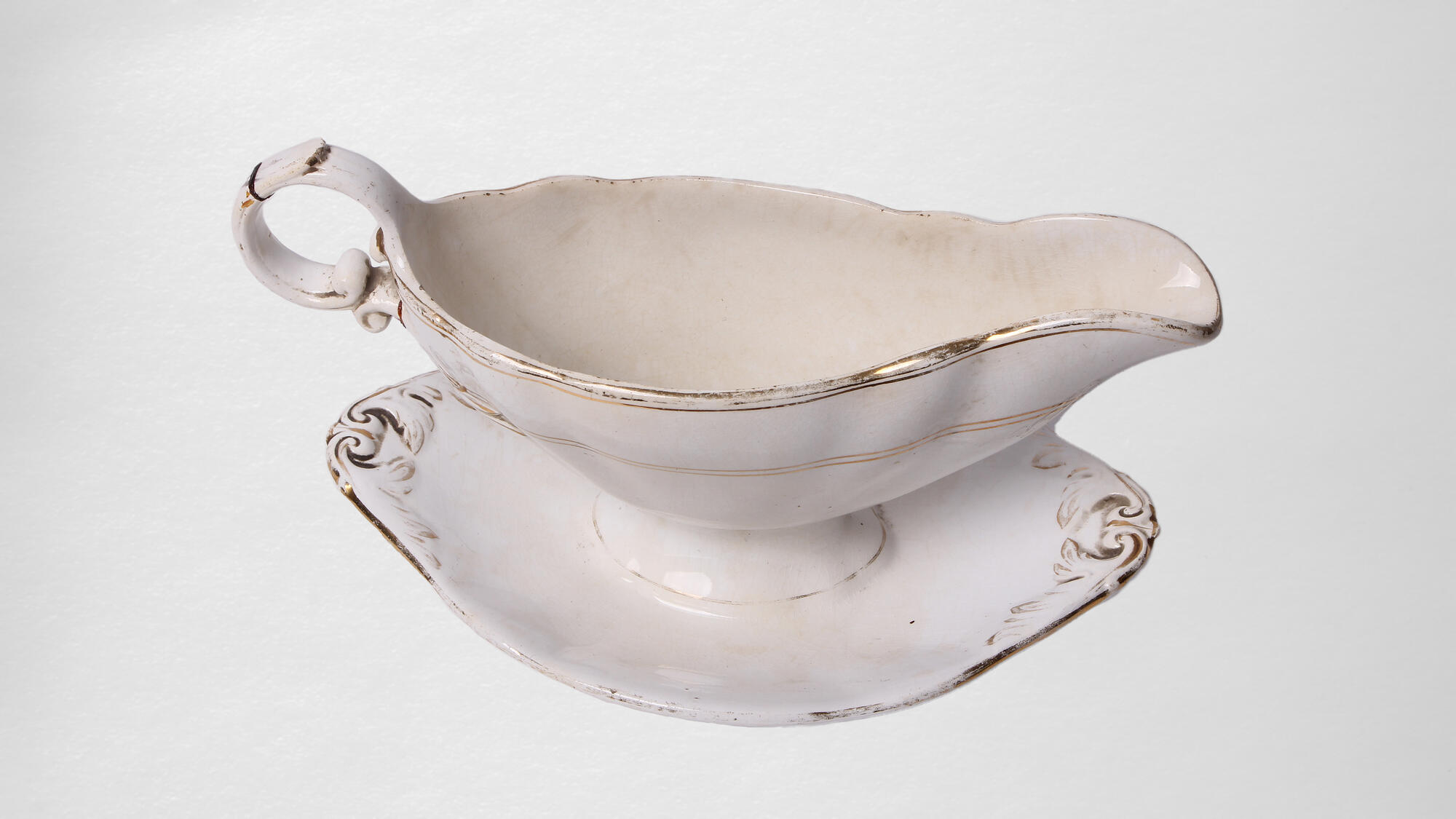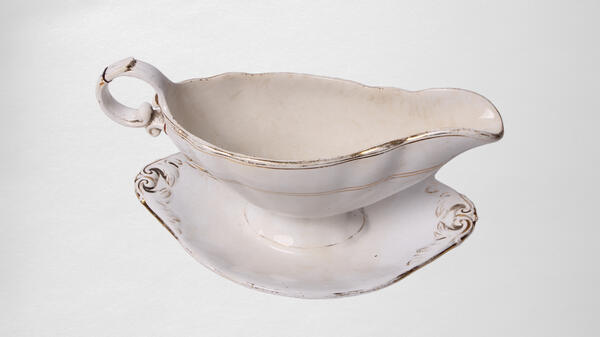Before the Russian Revolution of 1917, Mariinsk was a trading town. The majority of the population were merchants of different guilds, and the goods from Moscow were brought to the town along the Siberian Route. The museum houses a valuable object of that time — the sauce boat of the 19th century made of Kuznetsov porcelain.
The Kuznetsov Partnership was established in 1832, when Terentiy Kuznetsov purchased the Dulyovo wasteland in the Vladimir Governorate, and built a porcelain plant there. The plant flourished, and later, it was inherited by Kuznetsov’s son, Sidor, and then by his grandson, Matvey. That was he who turned his inheritance into the empire of eight major ware factories within a relatively short period. In 1887, the plant was registered as “M. S. Kuznetsov”s Partnership for the Production of Porcelain and Pottery Goods.”
The plant produced a wide range of goods: dinner services, various sculptures, pots, jugs, glazed earthenware, maiolica, — as well as telegraph and telephone insulators, electrical wiring items, and faience bathroom equipment. The factories also produced goods for the eastern countries — for example, pialas, dishes, hookah bowls. Each item was stamped with a factory mark: it was usually pressed in and painted in blue or green.
By 1898, the Kuznetsov’s Partnership became the largest in Europe, and in the early 20th century, its factories produced more than half of all Russian porcelain. In 1902, Kuznetsov received the title of Supplier to the Court of His Imperial Majesty. The products of his enterprises represented the country at world fairs, where they often received gold medals.
The Kusnetzov porcelain won fame and recognition, as it combined high quality and affordable prices. Thin-walled ware, previously unknown to peasants and middle class, appeared in pubs, tea houses, taverns, and other catering establishments. Inexpensive kitchenware was produced at Kuznetsov factories as carefully as for restaurants in the capital, or the Russian aristocracy.
Kuznetsov dinnerware was, first of all, goods of mass consumption of the 19th century. Therefore, decorations and paintings in blue, pink, lilac, and yellow colors were quite simple: they were made with stamps and stencils. Kuznetsov porcelain of that time was characterized by brightness, eclecticism, a large number of decorations, and sharp color combinations.
The Kuznetsov Partnership was established in 1832, when Terentiy Kuznetsov purchased the Dulyovo wasteland in the Vladimir Governorate, and built a porcelain plant there. The plant flourished, and later, it was inherited by Kuznetsov’s son, Sidor, and then by his grandson, Matvey. That was he who turned his inheritance into the empire of eight major ware factories within a relatively short period. In 1887, the plant was registered as “M. S. Kuznetsov”s Partnership for the Production of Porcelain and Pottery Goods.”
The plant produced a wide range of goods: dinner services, various sculptures, pots, jugs, glazed earthenware, maiolica, — as well as telegraph and telephone insulators, electrical wiring items, and faience bathroom equipment. The factories also produced goods for the eastern countries — for example, pialas, dishes, hookah bowls. Each item was stamped with a factory mark: it was usually pressed in and painted in blue or green.
By 1898, the Kuznetsov’s Partnership became the largest in Europe, and in the early 20th century, its factories produced more than half of all Russian porcelain. In 1902, Kuznetsov received the title of Supplier to the Court of His Imperial Majesty. The products of his enterprises represented the country at world fairs, where they often received gold medals.
The Kusnetzov porcelain won fame and recognition, as it combined high quality and affordable prices. Thin-walled ware, previously unknown to peasants and middle class, appeared in pubs, tea houses, taverns, and other catering establishments. Inexpensive kitchenware was produced at Kuznetsov factories as carefully as for restaurants in the capital, or the Russian aristocracy.
Kuznetsov dinnerware was, first of all, goods of mass consumption of the 19th century. Therefore, decorations and paintings in blue, pink, lilac, and yellow colors were quite simple: they were made with stamps and stencils. Kuznetsov porcelain of that time was characterized by brightness, eclecticism, a large number of decorations, and sharp color combinations.



